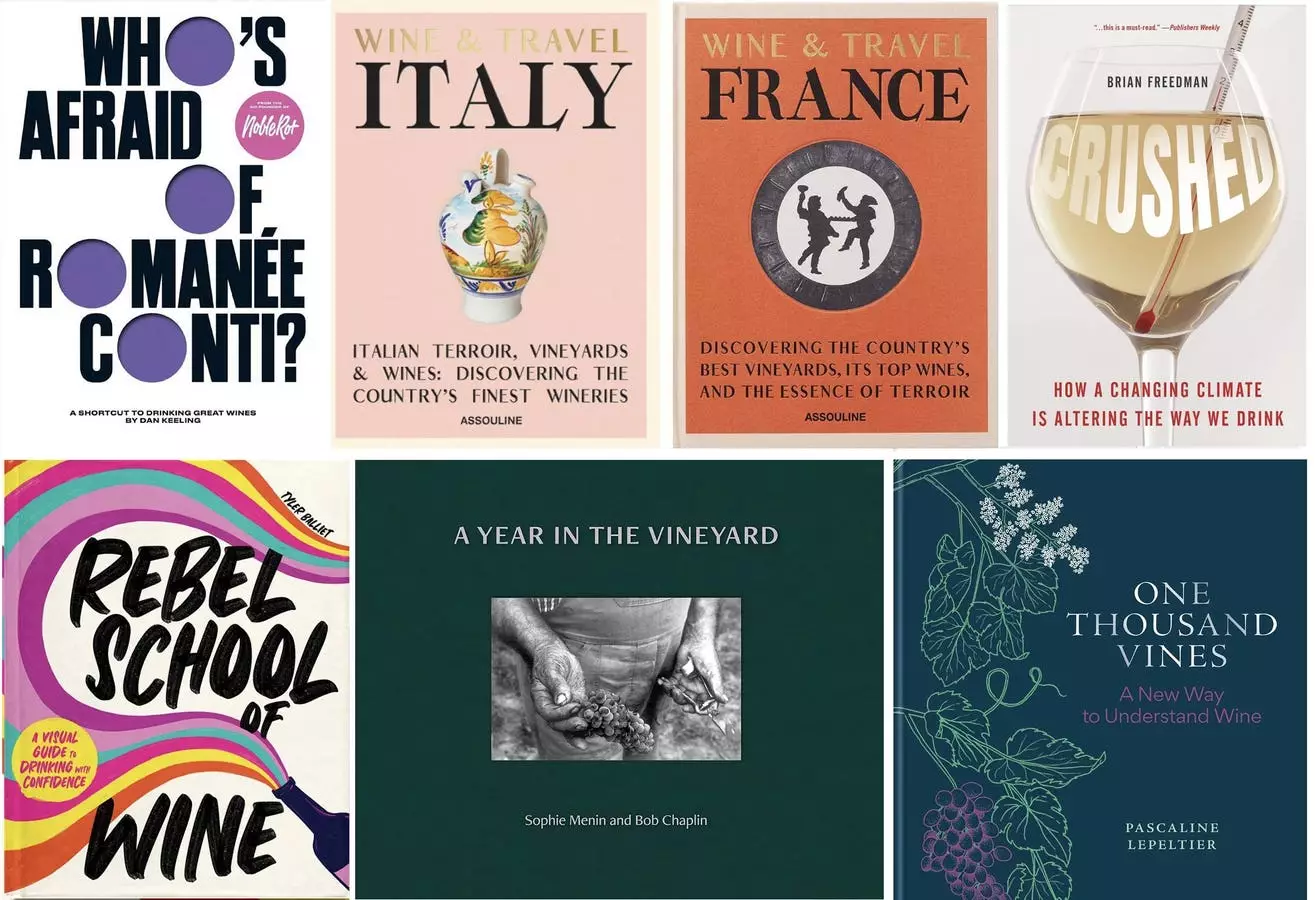As the world of wine continues to evolve, so does the literature that seeks to educate, inspire, and engage both seasoned connoisseurs and budding enthusiasts. This year’s collection of notable wine books offers a comprehensive journey into the realms of viticulture, regional delights, and sustainability challenges. From stunning imagery to thought-provoking commentary, these works serve not just as a guide but as an invitation to explore the underlying connections between wine and the world around us.
Sophie Menin and Bob Chaplin’s *A Year in the Vineyard* beautifully captures the annual cycle of viticulture through a stunning coffee table format. This 160-page book documents the transformation of vines throughout the seasons, featuring captivating photographs that range from the onset of growth in spring to preparations for winter dormancy. The thematic underpinning of growth, encapsulated by the Japanese proverb, “The footstep of the farmer is the best fertilizer,” elegantly enshrines the book’s premise. Menin and Chaplin don’t shy away from addressing current environmental challenges, illuminating the impacts of climate change on vineyards—evident in the stark and unexpected landscapes they showcase, like Lanzarote’s lunar soil or Santorini’s unique basket vines. Their work is a celebration of craftsmanship that not only romanticizes the art of winemaking but also delivers a poignant reminder of the fragility of our environment.
Travel aficionados will find themselves enraptured by Assouline’s *Wine & Travel France* and *Wine & Travel Italy*, each penned by renowned sommelier Enrico Bernardo. These books offer an engaging blend of travelogue and sommelier insight, taking readers on a colorful adventure through the picturesque vineyards and gastronomic delights of these two iconic wine-producing nations. At 303 pages for Italy and 311 pages for France, these volumes not only capture stunning visuals of both countries’ rich cultural fabric but also include a glossary for the uninitiated and curated selections for building a wine cellar. Bernardo’s unique perspective as a Michelin-starred restaurateur enhances the narrative, making it enriching for oenophiles and casual readers alike. The books underline the notion of wine as a medium through which personal and shared experiences unfold, connecting family, food, and tradition.
One Thousand Vines: A Deep Dive into Viticulture
Pascaline Lepeltier’s *One Thousand Vines: A New Way to Understand Wine* emerges as a vital contribution to wine literature, particularly for those seeking depth in their understanding of viticulture. The mix of alluring illustrations and well-structured content allows readers to gradually grasp complex topics—from vineyard management to the intricacies of terroir. Lepeltier sensitively weaves personal narrative with theory, culminating in her assertion that wine mirrors society—a sentiment laden with philosophical significance. As she highlights the threats posed to wine by societal changes, she simultaneously advocates for the joy and resilience that wine can impart in challenging times. It is a call to both appreciate and engage with wine as not merely a beverage but a steward of cultural heritage.
Who’s Afraid of Romanée-Conti?: The Unconventional Guide
For a more irreverent take, Dan Keeling’s *Who’s Afraid of Romanée-Conti?* offers an engaging and non-conformist perspective on wine selection and enjoyment. This guide stands apart by demystifying the often-stuffy world of wine, encouraging drinkers to explore beyond the well-trodden paths of exclusivity. Keeling employs a conversational tone and striking photography to create a narrative that feels accessible, providing readers with insider knowledge of underappreciated wines and producers. There is a palpable freshness in Keeling’s approach, akin to sitting with a witty friend over a glass of wine, making it a delightful read for both novices and seasoned drinkers alike.
Brian Freedman’s *Crushed: How a Changing Climate is Altering the Way We Drink* addresses one of the most urgent issues facing the wine industry today. Freedman’s journalistic rigor combined with personal anecdotes lends a compelling urgency to his narrative. Through striking contrasts—such as the emergence of southern England as a sparkling wine producer and the devastating impact of extreme weather events—he highlights the duality of opportunity and risk. This book serves as both a cautionary tale and a call to action, emphasizing the importance of understanding our environmental responsibilities in shaping the future of viticulture.
The wine literature of 2023 is a rich tapestry woven with stories of resilience, exploration, and a commitment to understanding the art of wine against the backdrop of an ever-changing world. Each book offers a unique perspective that deepens our appreciation and understanding of wine, making this year an exciting time for anyone looking to expand their knowledge and curiosity about this ancient craft. Whether you’re a novice or a seasoned enthusiast, there is a treasure trove of insights waiting to be discovered among these pages.


Leave a Reply